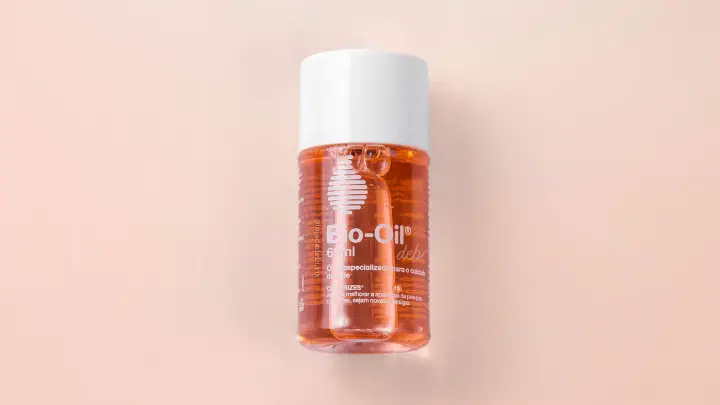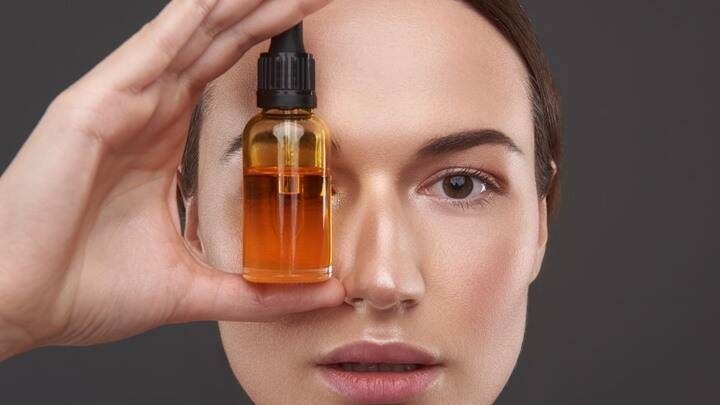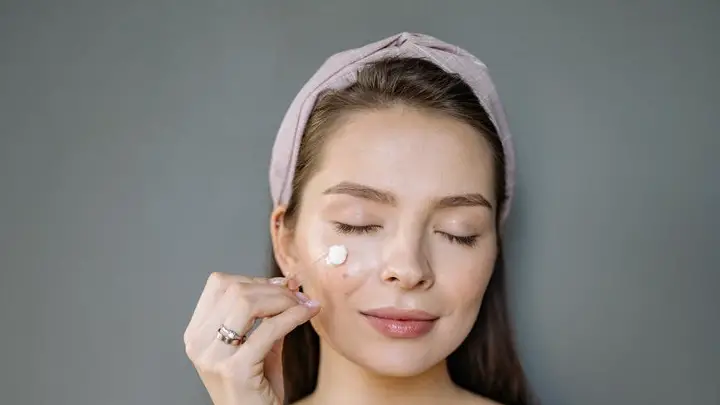Niacinamide and hyaluronic acid are two popular skincare ingredients, each with its unique properties. When used together, they can help improve skin’s appearance by increasing hydration, brightening skin tone, reducing wrinkles, and more.
Niacinamide is an active ingredient that works to diminish the look of blemishes and even out skin tone, while hyaluronic acid is a moisturizing ingredient that can hold up to 1000 times its weight in water.
While it’s always wise to do your research, this article will help you understand whether or not you can use niacinamide with hyaluronic acid, as well as its effects on the skin.
What is Niacinamide?
Niacinamide (also known as nicotinamide) is a form of vitamin B3 that occurs naturally in food sources such as beef liver, brewer’s yeast, fish, legumes, mushrooms, peanuts, poultry, seeds, and meat.
It also occurs naturally in our bodies from what we eat. In some cases, people might take niacinamide supplements to help improve skin tone and prevent premature aging signs.
You can also find niacinamide in various skin care products, including creams, gels, lotions, ointments, and tablets. When used regularly, niacinamide will help your skin become more even-toned and less prone to wrinkles and other signs of aging.
What Are The Benefits of Niacinamide for Skin?
- Reduces the appearance of fine lines and wrinkles as well as other aging signs.
- Improves barrier function and helps maintain hydration levels in the outer layers of the skin, reducing the appearance of flakiness and dryness.
- Reduces acne and prevents oil production, which is great for those with oily skin.
- Improves skin elasticity and makes it firmer and more supple.
- Exfoliates dead cells that have built upon the skin, which can help keep skin looking younger
- Reduces inflammation and redness caused by acne breakouts, rosacea, and certain skin conditions.
- Helps to decrease the production of melanin in the skin, making it brighter and more even-toned.
What Is Hyaluronic Acid?
Hyaluronic acid is a naturally occurring substance in your body that’s responsible for keeping your skin looking and feeling hydrated.
It’s found in many parts of the body, such as the eyes, mouth, and joints. In skincare, it’s used as a humectant because it can hold up to 1,000 times its weight in water.
But what does this mean for your skin? Well, when you apply hyaluronic acid to your skin, it will help lock in water and keep your face feeling more moisturized for longer periods.
This is helpful because our bodies produce less hyaluronic acid as we get older. In other words, hyaluronic acid can boost the effects of your moisturizer by keeping your skin more moisturized for a longer period.
What Are The Benefits of Hyaluronic Acid for Skin?
- Attracts water molecules from the environment and retains them on the skin.
- Helps heal wounds by regulating tissue repair.
- Reduces wrinkles and fine lines by increasing skin hydration
- Relieves dryness, itching, and flakiness caused by eczema and other dry skin conditions
- Stimulates skin cell renewal by providing extra hydration to skin cells
- Diminishes hyperpigmentation and dark spots by stimulating cell turnover
- Great for all skin types including sensitive skin
- Prevents oily skin by balancing oil to water content in the skin
Can You Use Niacinamide with Hyaluronic Acid?
Absolutely. Niacinamide and hyaluronic acid are two different ingredients that work well together to improve the look and feel of the skin. When layered properly, both ingredients help to provide natural-looking results without irritating the skin.
Niacinamide works by increasing circulation in the upper layers of the skin, which helps to keep collagen healthy. It also works as an antioxidant to prevent damage from free radicals that can cause aging signs and skin discolorations.
Hyaluronic acid can retain moisture up to 1000 times its weight in water, keeping the skin looking fuller and more hydrated. It works by attracting water from the environment, essentially pulling moisture from the air and hydrating skin from within.
When applied together, both ingredients provide skin with the moisture it needs while also providing several other benefits. You can use these two ingredients alone or in combination with other ingredients.
They’re also easy to get. You can find niacinamide in topical creams, lotions, serums, or gels that are applied to the face. Likewise, hyaluronic acid is also available in topical creams, gels, or sprays that are applied to the face.
Benefits of Using Niacinamide with Hyaluronic Acid
There are many benefits to using these two together. You can use them to treat a variety of different skincare concerns including:
- Repairing skin barrier
- Improving skin elasticity
- Reducing acne and improving acne scarring
- Healing and improving the appearance of sun-damaged skin
- Decreasing fine lines and wrinkles
- Increasing moisture content in the skin
- Reducing the appearance of large pores and blemishes
- Getting rid of rough, dry patches on rough areas of skin
Can You Layer Niacinamide with Hyaluronic Acid?
Yes, you can layer niacinamide with hyaluronic acid and get even better results than before. Niacinamide is a powerful antioxidant, while hyaluronic acid is a water-binding and holding molecule.
The two are perfect for layering because they target different skin concerns. While niacinamide targets aging signs and inflammation, hyaluronic acid adds moisture to the skin, which can make it appear more supple and younger-looking.
When layered together, the effects of both ingredients are multiplied instead of working separately. You can also layer them with other ingredients; however, ensure to check with your dermatologist to make sure it’s safe.
If you do decide to layer both ingredients, it doesn’t matter if you use them in the morning or at night. Just make sure to give the niacinamide enough time to absorb into your skin before applying hyaluronic acid on top.
Can You Use Niacinamide with Hyaluronic Acid to Treat Aging?
Both ingredients are great for aging skin because they can help stimulate collagen production and reduce skin hyperpigmentation such as age spots and sunspots.
Hyaluronic acid is an ingredient that helps to retain water in the skin. It’s the main component of the skin’s natural moisture barrier, and it helps to strengthen this barrier.
Niacinamide increases ceramide production and stimulates the production of collagen and elastin which helps keep your skin youthful and supple.
So, when you apply niacinamide to your skin with hyaluronic acid, you’re increasing the level of moisture in your skin while also stimulating collagen production. This helps to tighten up your pores and reduce fine lines and wrinkles.
How to Use Niacinamide with Hyaluronic Acid
There are two ways to use niacinamide with hyaluronic acid. You can use them as a combined product and you can layer them as two separate products.
Niacinamide with hyaluronic acid as a combined product:
- Cleanse your face thoroughly with a gentle foaming cleanser. This will help prepare your skin for the next steps.
- Apply a toner to remove any remaining dirt or oil from your skin.
- Squeeze 2-3 drops of the serum into your fingertips then rub it all over your face in gentle circular motions.
- Wait for 5-10 minutes before applying a pea-sized amount of moisturizer to your face.
- Apply sunscreen, then wait for a few minutes before heading out. This will give the products enough time to absorb into your skin.
For best results, apply your serum after washing your face in the morning and at night before going to bed. Wash your hands after application so you don’t accidentally rub the serum off on other parts of your body where you don’t want it.
Niacinamide with hyaluronic acid as separate products:
- The first step is to wash your face with a gentle cleanser and warm water.
- Apply a toner. This will help the other steps absorb into your skin better.
- Apply niacinamide first. Because niacinamide has such a strong potency, it is best to apply it before hyaluronic acid.
- Wait for 5-10 minutes or until the niacinamide is dry before applying your hyaluronic acid cream or serum.
- Let it sit on your skin for about 10 minutes before applying moisturizer and sunscreen.
You should follow these steps every morning and every evening after washing your face to achieve smoother, brighter skin.
Dosage
The recommended dosage for topical application is a 3% to 10% concentration of niacinamide combined with a 1% to 5% concentration of hyaluronic acid.
However, it is important to note that certain treatments can interact with niacinamide and hyaluronic acid. So ensure to consult your doctor to know the right concentration you should be using.
Frequency of use
The recommendation is to apply niacinamide with hyaluronic acid once daily, then work up to twice a day. You can apply them more frequently if your doctor recommends them.
Application time frame
Apply immediately after cleansing your skin. Make sure to apply your niacinamide serum first, then wait for 5-10 minutes before following it up with your hyaluronic acid product.
Wait for 5-10 minutes also before applying a moisturizer and any other skincare products of your choice.
Potential Risks and Side Effects
The most common side effects reported by people who use niacinamide with hyaluronic acid are flushing, rashes, itching, and swelling. However, these side effects are not serious and tend to go away after a few days.
Moreover, these side effects are more likely to occur during the first few days of using both ingredients. If these symptoms last for more than a few days, talk to your doctor about reducing the dosage or discontinuing use.
Furthermore, avoid using this combination if you are pregnant or breastfeeding unless your doctor tells you otherwise. You should also avoid this combination if you’re allergic to either niacinamide or hyaluronic acid.
FAQs
What can you not mix with niacinamide?
Vitamin C. Niacinamide and vitamin C are both powerful antioxidants, but they can neutralize each other’s effectiveness once inside the skin, so mixing them is pointless.
When mixed they can cause the formation of an unstable chemical compound called niacin which can lead to skin irritation. You should use these two products at different times of the day to avoid any negative interactions.
Can niacinamide and hyaluronic acid treat acne?
Yes, they can. Although niacinamide and hyaluronic acid are not cure-alls for acne, they can help to fight acne by increasing hydration, reducing oil production, and reducing acne-causing bacteria.
Both ingredients can help create a strong barrier against bacteria while also increasing the moisture levels in the skin. Combining niacinamide and hyaluronic acid also helps reduce oil production which is the major cause of acne breakouts.
Can you use niacinamide and hyaluronic acid on oily skin?
Yes, you can. Niacinamide and hyaluronic acid are safe for all skin types and they can help to clear clogged pores and reduce oil production in the skin. This can be great for oily skin because it will prevent that unpleasant greasy feeling.
Niacinamide and hyaluronic acid are also key ingredients in many oil-free moisturizers and serums made specifically for people with oily or acne-prone skin.
Conclusion
Niacinamide and hyaluronic acid are two of the most important active ingredients for skincare. While both will make your skin look clear and bright, they each bring different benefits to the table.
Niacinamide is a powerful antioxidant ingredient that can help reduce aging signs and even out discolored skin tones, while hyaluronic acid increases skin hydration to keep your complexion looking plump and youthful.
By pairing these two active ingredients together in your skincare routine, you can improve the look and feel of your skin in no time.
Thanks for reading.
Visit Serum101 for more articles on how to pair skincare ingredients to make your skin glow.







